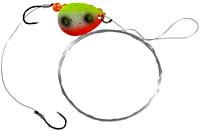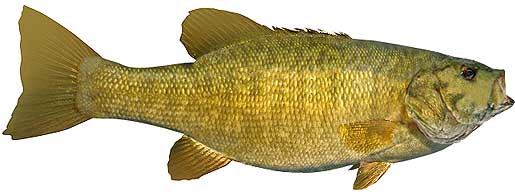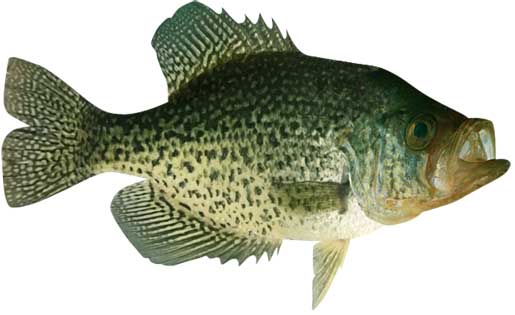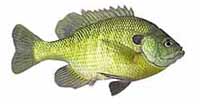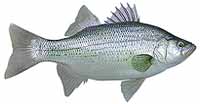Fishing Report For Lake James, NC
By Rick Seaman
January 12, 2025
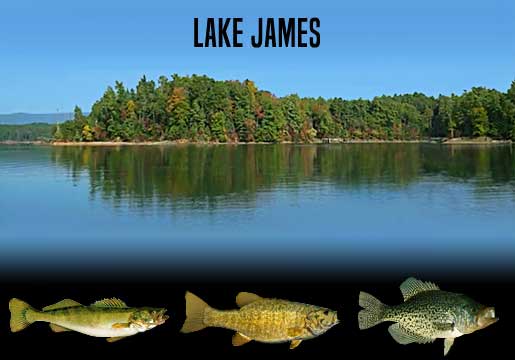
Most Popular Fish Species In Lake James, NC
Walleye
Current Report: Good
Locals are reporting that walleye are particularly tasty here due to the cool, clean water in Lake James. The North Carolina Wildlife Resources Commission initiated a thorough walleye stocking program, which has created a very successful fishery.
FALL. Fall brings cooler temperatures to shallow water, drawing walleye and baitfish shallower. Jigs, swimbaits, spoons, crankbaits, jerkbaits, and spinnerbaits are all historically good for catching walleye this time of year. Early Fall finds them in 20 to 40 feet of water. Nightcrawlers, minnows, jigs and deep-diving crankbaits are all catching walleye here. When I fish for walleye, I prefer to troll at a variety of depths in order to locate schools. Later in Fall, they move out deeper again. Dragging jigs or worm harnesses with nightcrawlers or leeches, or bottom bouncers, around ledge drop-offs catches walleye fairly consistently. Watch for the bigger walleye to be slightly deeper than the majority of the school.
WINTER. Anglers report catching walleye in 40 to 60 feet of water, along creek channel edges, rocky humps and ledges. They primarily feed on small fish, staying close to the bottom. Blade baits, jigs, swimbaits, spoons, deep-diving crankbaits, and worm harness spinners, are all working while deep trolling or slow drifting.
SPRING. Early Spring brings warming water in the shallows, and draws walleye here to feed, especially rocky areas and inlet channels. Here, in 15 to 30 feet deep, they will spawn once the water warms to the mid to high 40's. When they move shallow, bright colored jigs, tipped with minnows or nightcrawlers typically catch them in 10 to 20 feet of water. Spinnerbaits, jerkbaits and crankbaits are also working when walleye are up shallow. Afterwards, they move into about 25 feet of water, around shallow points, flats, shoals and ledges, often staying in close proximity to their spawning locations.
SUMMER. Water temperatures rise in Summer, and walleye fishing is good if you can get your bait deep enough. Walleye tend to concentrate in 30 to 50 feet of water, preferring the cooler temperatures. Throughout Summer, early in the morning, and from dusk to long after dark are good times to catch walleye. At those times they move slightly shallower to feed in low-light conditions. Night fishing is often good in Summer, as well. The rest of the time they are cruising flats and creek channel edges, where they are harder to locate. When the bite is slow, grubs and nightcrawlers, fished just off the bottom are catching walleye.
Smallmouth Bass
Current Report: Very Good To Excellent
Lake James is widely-known as an exceptional smallmouth bass fishery.
FALL. As Fall arrives, smallmouth here follow schools of baitfish into coves and bays 5 to 10 feet deep. This is where jerkbaits, crankbaits, and slow-rolled spinnerbaits, are quite successful. According to reports, smallmouth fishing is good from the first week of May through October. The average fish being caught averages about 1 3/4 pounds, but plenty of 3 to 4 pound smallies are often caught. Fishing shallow for smallmouth is often good on cold, windy, cloudy and rainy days. Some locals report good catches in the Linville Arm of the lake, concentrating on the big flats there.
WINTER. Winter will isolate them around deeper structure, points and creek channels, often suspending in open water above these features. They can generally be found from 20 to 40 feet deep, often deeper. Here they hold, feeding less frequently, awaiting warmer water to return in Spring.
SPRING. When water temperatures rise into the 50's now, smallmouth have moved from deep wintering spots to shallower water, just outside spawning areas. They feeding heavily in 5 to 15 feet of water at this time, and are typically caught on jerkbaits, crankbaits, tube baits, Ned rigs, and crayfish imitating plastics. Once water warms into the high 50's, they move into shallower water, and create nests in gravel or sand areas, then lay their eggs. Females then move to deeper water and males remain to guard the eggs, and then the fry. After a couple weeks, the males also move to 15 to 30 feet deep, and feed aggressively. Crankbaits, tube baits, Ned rigs, plastic worms, spoons and jigs are catching smallies during this period.
SUMMER. Smallmouth bass, including a few trophy-size gems, are currently feeding shallow early and late in the day, where they are being caught on topwater, crankbaits, swimbaits, Ned rigs and tube baits. Smallmouth bass here feed on crawfish, threadfin shad, gizzard shad, and small sunfish. They prefer rocky or gravel bottom areas, as this is where crayfish live. Drop shot rigs, tube baits, spoons, live bait and mid-range crankbaits are all catching smallmouth in Lake James this year. During the hotter parts of the day, they are being caught on points, humps, and ledges 30 to 50 feet deep. Often these deeper fish are part of a large school of smallmouth.
Black Crappie
Current Report: Very Good
FALL. Baitfish, which are moving into shallow flats, coves and bays, are drawing crappie into these areas. Due to the nutrient-rich water, most reports of good crappie catches are coming from the Catawba River arm of the lake. They are feeding heavily in preparation for the cold Winter. Minnows, hair jigs, and crappie jigs, are good options during this feeding marathon. Late fall starts the migration deeper, toward winter holding areas, for both crappie and baitfish. Small flutter spoons are a good option during this transition. Locals also report good success using both live minnows, and a wide variety of crappie jigs from 1/32 oz to 3/16 oz.
WINTER. Once the shallows start cooling rapidly, crappie will migrate to deeper holding areas, mostly off shore. At this time they are typically caught using a very slow presentation, in 25 to 35 feet of water. If they are suspending in open water, they often relate to some cover, or structure change, directly below them.
SPRING. In early Spring, crappie begin staging in 5 to 15 feet of water, just outside spawning bays and shallow flats. Spring is prime time to be on the water, as crappie have moved shallow to spawn. As they spawn, they are typically caught in 2 to 8 feet of water. Vegetation, docks, brush and wood are where most anglers catch crappie using small crappie jigs or live minnows. After the spawn, crappie typically move outside the spawning area and hold on cover close by, in 10 to 12 feet of water. Once they move even deeper, anglers report success using fish finders and forward facing sonar to locate schools of crappie, which tend to stack vertically around cover. Light tackle, with 4 lb to 8 lb line, is a popular choice.
SUMMER. Water temperatures warm, and crappie fishing is usually pretty good. Now that the spawn is over, and the hot Summer sun is warming the shallows, crappie have retreated to depths of 15 to 30 feet, or embedded in the shade of heavy vegetation. This is a good time to focus around bridge pilings and deeper docks. Anglers are also locating schools of crappie hanging over deep structure and around creek channel edges.
Fishing Video
Fish species to fish for...
Guide to fishing for largemouth bass, smallmouth bass, blue catfish, black crappie, white crappie, walleye, bluegill, white bass, striped bass, northern pike and tiger muskie at Lake James in North Carolina.
 Lake James is a 6,800-acre reservoir with depths up to 120 feet and over 150 miles of shoreline. This cold-water lake is home to quite a variety of freshwater fish species. Bass, walleye and crappie are favorite targets for anglers, as all three make good table fare.
Lake James is a 6,800-acre reservoir with depths up to 120 feet and over 150 miles of shoreline. This cold-water lake is home to quite a variety of freshwater fish species. Bass, walleye and crappie are favorite targets for anglers, as all three make good table fare.
Primary fish species to catch
Click images for fishing tips and details about each species.
Today's Weather & Forecast
Marinas
Click here for marinas.
Public Boat Launch Ramps & Landings
Click here for boat ramps.
Click here for a North Carolina Fishing License.
Lake James, NC Map - Fishing & Access
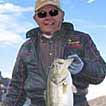 Rick Seaman is a fishing enthusiast with over five decades of fishing experience, a retired tournament fisherman, author of numerous published articles on fishing, and co-author of the book "Bass Fishing - It's not WHAT you throw, It's WHERE you throw it".
Rick Seaman is a fishing enthusiast with over five decades of fishing experience, a retired tournament fisherman, author of numerous published articles on fishing, and co-author of the book "Bass Fishing - It's not WHAT you throw, It's WHERE you throw it".
 Contact Information
Contact Information
Lake James State Park
6883 NC Hwy 126
Nebo, NC 28761
828 584-7728
Fishing lakes in each state
100625
Lake James, North Carolina Report
NORTH CAROLINA


Bass, crappie and walleye fishing in north-central NC.



